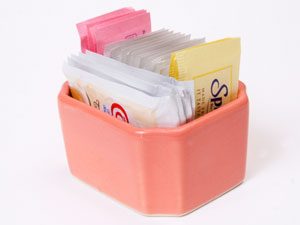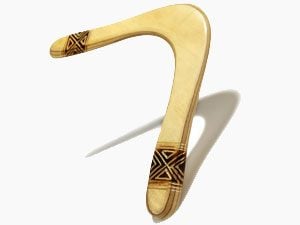Here are the easy ways to motivate yourself and get the most of your workout

If you are one of the minority of people who regularly goes to a gym for exercise, then congratulations! It means you have the right priorities and terrific discipline. But it's fair to say that at times, even for committed exercisers, motivation often flags, and there are days when it requires a Herculean effort just to put on our workout clothes and walk through the gym doors.
If you're lucky, the sights and sounds of exercise are all you need to motivate yourself to get moving. At other times, you still may not have the slightest urge to get started. For those days, here are some ways to get the most out of your workout.
1. Avoid the mirrors. Many fitness locations line exercise rooms with mirrors to allow you to watch your form as you work out. Yet a study of 58 women found that those who exercised in front of a mirror felt less calm and more fatigued after 30 minutes of working out than those who exercised without staring at their reflection. The national exercise chain, Curves, deliberately designs its small gyms without mirrors so women can concentrate on each other and the workout rather than on how they look. Other gyms are beginning to offer “reflection-free” zones. If yours doesn't, mention the idea--and the study--to the gym manager.
2. Try using aromatherapy oils known to enhance energy, such as rosemary. Mix them with water and store them in a squirt bottle in your gym bag. Give your gym clothing a few squirts before leaving the dressing room so you can smell the oil as you work out. If you're in the midst of a more meditative, slowerpaced workout, such as Pilates or yoga, try lavender oil instead of rosemary.
3. Create your own personal gym mix tapes, CDs or digital recordings, and listen to them as you work out. Researchers from the University of Wisconsin-La Crosse found that people who listen to up-tempo music got significantly more out of their stationary bike workouts. They pedaled faster, produced more power, and their hearts beat faster than when they listened to slow-tempo music or sounds with no tempo. Overall, they worked between 5 and 15 percent harder while listening to the energizing beat. Although the type of music you choose is up to you, pick something with a fast beat that makes you want to break out in dance. You can custom-design your own exercise music to burn to a CD or download to an MP3 player at Internet sites such as www.mywalkingmusic.com or www.workoutmusic.com.
4. Think of someone who irritates you. Then step on the treadmill, stair stepper, stationary bike, or elliptical machine and sweat out your aggression as you run, climb, or cycle. You might even imagine that you are running an imaginary race against this person. You'll get in a better workout--and blast away anger and stress at the same time.
5. Drink a bottle of water or juice on your way to the gym. If you show up for your workout already dehydrated, you'll feel overly fatigued during your session, says Craig Horswill, Ph.D., principal scientist for the Gatorade Sports Science Institute in Barrington, Illinois. “Nearly half of all exercisers are starting their workouts at a real disadvantage--by arriving at the gym already dehydrated,” he says. “When you're dehydrated, you can't work as hard, you don't feel as good, and your mental function is going to be compromised. Consequently, you're not going to get as much out of your workout.”
6. Think you can and you will. So simple, yet so often ignored, positive thinking can help you power your way through a workout. In a study of 41 adults ages 55 to 92, exercisers who thought positively were more likely to stay active than those whose minds often uttered those two evil words: “I can't.” Whenever you find yourself making excuses, mentally put those self-defeating thoughts in a locked cabinet in your brain and replace them with positive messages such as, “I feel great” or “Bring it on.”
7. Turn off the tube when exercising. It's tempting to try to lose yourself in television programming as you slog away on the treadmill or stationary bike. Yet a 1996 study found women worked out about 5 percent harder when they weren't watching TV than when they were. Although your favorite TV show may take your mind off your workout, it also causes you to lose touch with your effort level. You unconsciously slow down or use poor form as you get caught up in what you are watching. If television sets line the workout area, get on the equipment closest to the monitor tuned to C-Span. Sure you'll glance up at the monitor from time to time, but unless you're a complete political junkie, you probably won't get sucked in.
8. Work out with a friend. If you're feeling stale and are thinking of skipping your gym workouts, ask a friend to meet you for a gym date. As you walk or run on the treadmill, you can share stories of your day. Thirty minutes will go by before you know it. You can also encourage each other to work a bit harder. Your friend can also help you find the courage to approach unfamiliar gym equipment, as it's easier to laugh off your foibles when you have a trusted companion nearby.
9. Set a short-term workout goal. We all know that goals help motivate you to work harder, and that the best exercise programs include measurable goals to achieve weeks or months down the road. Sometimes, though, when your motivation is drooping, a goal for what to achieve over the next 30 minutes is really what you need. So pick something achievable: Maintain a sweat for 20 minutes, or cover two miles on the treadmill, or give just your arms a really good strength workout. A target like that gives you focus to get through on even the tough days.
10. Change your routine every three to four weeks. This will keep your body guessing - improving your result - and fuel your motivation. In the weights room, alternate exercises and modify the way you lift weights. If you usually do two sets of 15 reps, complete one set of 15, then increase the weight for another set of 8 reps. On cardio equipment, switch from the treadmill to the stair stepper etc. Mix up your exercise classes as well, switching around from Pilates to aerobic dance to yoga to kickboxing.
11. Slow down. In one American study, participants who lifted slowly - taking at least 14 seconds to complete one repetition - gained more strength than participants who lifted at a rate of 7 seconds per rep. Slower lifting may help increase strength because it prevents you from using momentum or improper techniques.
12. Invent a competition with the person on the next treadmill. If you're on the treadmill and you're bored, glance at the display on someone else's nearby treadmill. If you're walkig at 3.5 miles per hour and he or she is chugging away at 4mph, see if you can increase your speed and catch up, as if it were a race. The other person won't even know you're racing.
 If you are out to dinner at a restaurant, or even if grease splatters on you while you are cooking, use artificial sweetener immediately to blot the stain. The fine powder will absorb the oil. You may have to keep blotting and using more sweetener, but it really works! And artificial sweetener is always handy at any eatery.
If you are out to dinner at a restaurant, or even if grease splatters on you while you are cooking, use artificial sweetener immediately to blot the stain. The fine powder will absorb the oil. You may have to keep blotting and using more sweetener, but it really works! And artificial sweetener is always handy at any eatery.








